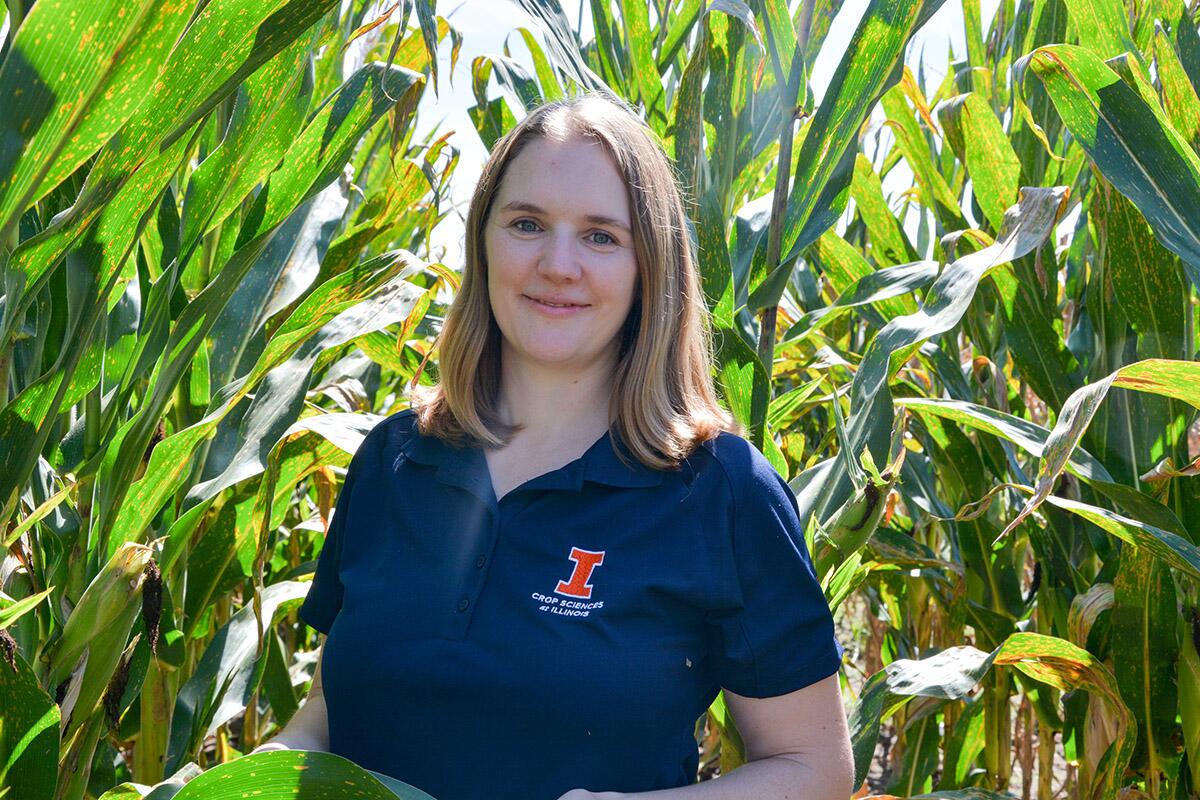Illinois project takes on quantitative disease resistance in corn

URBANA, Ill. – Like the virus that causes COVID-19, pathogens that attack crops change constantly to evade host immunity, or disease resistance in plant parlance. Sometimes, a single gene makes the difference between a resistant crop and one that’s susceptible. In those cases, the gene typically blocks the pathogen for a while, until the microbe makes a change.
That’s where quantitative disease resistance comes in. Here, multiple genes work together to offer shades of disease resistance in a plant. If the pathogen evolves to overcome one of the genes, there are backups. In other words, resistance remains much more durable.
Tiffany Jamann, assistant professor in the Department of Crop Sciences at the University of Illinois, and her colleagues received $1.5 million from the National Science Foundation to study quantitative disease resistance in corn.
“Plant diseases cause an estimated 13% loss of global crop yields annually, reducing incomes and food quality and safety. Quantitative disease resistance usually works against all variants of pathogens, and thus is an effective disease management tool,” Jamann says. “Our research will identify disease resistance mechanisms for some of the most important diseases of corn, which is both a model species for plant quantitative genetics and the most valuable crop in the U.S.”
Because there are multiple genes working together in quantitative disease resistance, it’s a little more difficult to find them all. But Jamann has experience with that. She and her colleagues were the first to identify genes for corn resistance to bacterial leaf streak disease. She also has worked to uncover pathogen lifestyle for corn diseases as well as resistance mechanisms in sorghum.
The new NSF study aims to understand quantitative resistance to multiple corn foliar and seedling diseases by looking at the level of the gene to the whole plant. Jamann is particularly excited to explore how plants defend against vascular infection, or how plants keep pathogens from entering the xylem, the plant’s water transport system.
“For example, bacterial leaf streak is typically thought of as a nonvascular pathogen; usually the bacteria don't get into the xylem,” she says. “But we have a few corn lines that allow bacteria in that way, so we're trying to understand why that's the case.”
Other members of the research team, including Santiago Mideros, assistant professor in the Department of Crop Sciences, and researchers at North Carolina State University, will examine resistance to seedling diseases and use gene editing to make corn more resistant to foliar diseases of corn.
“Beyond the work on quantitative disease resistance, we will make genetic resources available to the broader maize genetics community. These resources will be useful beyond just looking at disease resistance,” Jamann says.
The project also includes an education component. Project partner North Carolina State University will participate in and provide funds to continue and update a successful plant breeding and genetics workshop for science teachers, as well as participate in NC State’s AgDiscovery Camp for high school students.
“I think high school students could get excited about this concept that plants can’t run away from diseases. It’s all about how they evolve resistance and how the pathogens and plants try to out-maneuver each other,” Jamann says.
To learn more about a future in crop science research, interested students can visit the College of Agricultural, Consumer and Environmental Sciences’ (ACES) future students page.